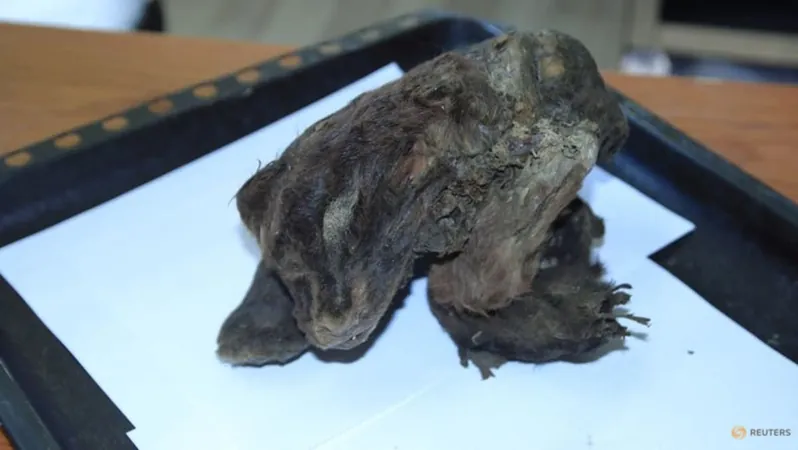
Scientists Make Astonishing 32,000-Year-Old Sabre-Toothed Cat Cub Discovery—What This Means for Paleontology!
2024-11-21
Author: Siti
YAKUTSK, RUSSIA: An incredible archaeological breakthrough has captured the attention of the scientific community with the discovery of a 32,000-year-old sabre-toothed cat cub, found perfectly preserved in permafrost in northeastern Russia.
Measuring small enough to fit in a human hand, this remarkable specimen was approximately three weeks old when it perished, and its remarkable state of preservation is being hailed as a milestone for palaeontologists globally.
Researchers from the Academy of Sciences in Yakutia announced that this find is unlike any other previously encountered. Aisen Klimovsky, a prominent figure from the Department for the Study of Mammoth Fauna, made headlines when he stated, "Nowhere else has it been found in such good preservation.” The cub retains its dark brown fur, a striking detail that sets it apart from previous skeletal finds; notably, previous specimens discovered in Texas lacked such integral features.
"This is the first find that will show the world what they really looked like," added Klimovsky, highlighting the cub's significance in bridging gaps in our understanding of sabre-toothed cats. He elaborated that such discoveries unlock "nature's big secret," offering insight into the appearance and life of these prehistoric creatures.
The serendipitous discovery occurred four years ago during an excavation for mammoth tusks along the Badyarikha River in Yakutia, a region that spreads over an area larger than Argentina and is renowned for its dense forests and swamps. Approximately 95 per cent of Yakutia is covered in permafrost, a climate that has helped preserve these ancient remains remarkably well.
However, rising global temperatures linked to climate change are leading to the melting of permafrost, unearthing not just sabre-toothed cats, but also other remnants of ancient wildlife. Earlier this year, a 44,000-year-old wolf carcass emerged from this thawing tundra, offering yet another glimpse into Earth's historic fauna.
The sabre-toothed cat cub belongs to the genus Homotherium, which roamed across North America, Eurasia, and Africa from 4 million to 12,000 years ago. These majestic creatures, which grew to be the size of modern lions, are particularly well-known for their distinctive serrated upper incisors, a key trait that likely aided them in hunting.
Albert Protopopov, head of the Mammoth Fauna department and a co-author of the study published in Nature, expressed his excitement about the find, labeling it a “real sensation” in the field of palaeontology. He believes this cub will provide invaluable information for scientists studying the evolutionary history of these incredible predators, potentially shedding light on their behaviour, environment, and extinction.
Stay tuned as this groundbreaking discovery evolves—the secrets of the sabre-toothed cat may bring forth revelations that rewrite what we know about Earth's prehistoric past!



 Brasil (PT)
Brasil (PT)
 Canada (EN)
Canada (EN)
 Chile (ES)
Chile (ES)
 España (ES)
España (ES)
 France (FR)
France (FR)
 Hong Kong (EN)
Hong Kong (EN)
 Italia (IT)
Italia (IT)
 日本 (JA)
日本 (JA)
 Magyarország (HU)
Magyarország (HU)
 Norge (NO)
Norge (NO)
 Polska (PL)
Polska (PL)
 Schweiz (DE)
Schweiz (DE)
 Singapore (EN)
Singapore (EN)
 Sverige (SV)
Sverige (SV)
 Suomi (FI)
Suomi (FI)
 Türkiye (TR)
Türkiye (TR)